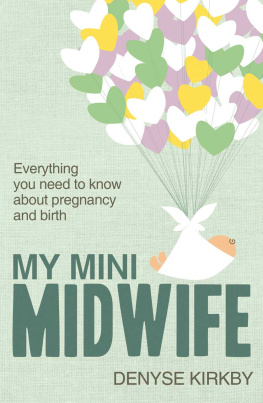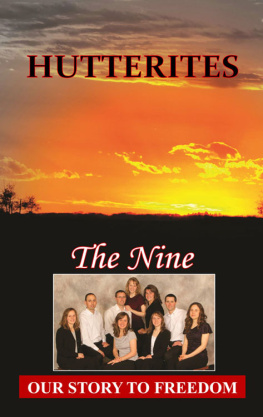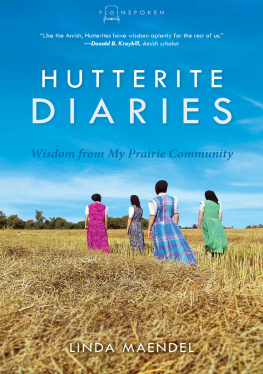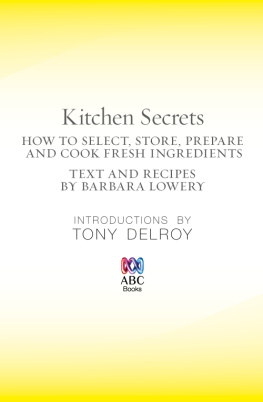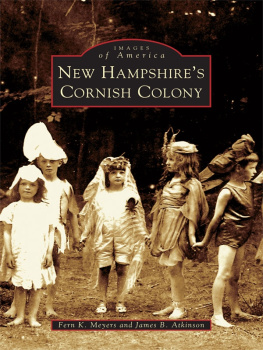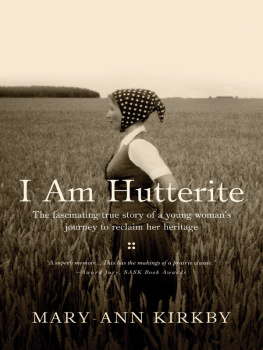Praise for I Am Hutterite
A coming-of-age narrative as riveting and well-paced as a novel, with pitch-perfect writing.
Publishers Weekly
Honest, strong, clear, direct, it opens the door on what has been for so many of us a completely closed world.
Winnipeg Free Press
A superb memoir that takes us into the hidden heart of a prairie Hutterite colony. In a style both sparing and supple, Mary-Ann Kirkby conjures up both the warmth and simplicity of Hutterite life and the pain of leaving it. This has the makings of a prairie classic.
award jury, Saskatchewan Book Awards
As one who reads dozens of books per year, I count Kirkbys chronicle of her 1960s-era upbringing in a Hutterite community in southern Manitoba among the most impressive works in recent memory.
Evelyn C. White, The Vancouver Sun
A yearning to still belong to the thread of life that is trapped in a timeless bubble comes through in a loving voice.
Smoky Lake Signal (Alberta)
A touching story about rediscovering ones birthright.
Redlands Daily Facts (Redland, California)
PENGUIN
SECRETS OF A HUTTERITE KITCHEN
MARY-ANN KIRKBY is an award-winning journalist and the bestselling author of I Am Hutterite: The Fascinating True Story of a Young Womans Journey to Reclaim Her Heritage. Her memoir chronicled her childhood experiences growing up on a Hutterite colony in western Canada and the difficult aftermath of leaving her community to forge a new life in the modern world. I Am Hutterite won the prize for best non-fiction at the 2007 Saskatchewan Book Awards, and is a valued curriculum option in Canadian schools and universities as a means to build bridges and teach tolerance and understanding of other cultures.
Kirkby is a member of the Canadian Association of Professional Speakers, delighting audiences with her honest and humorous accounts of Hutterite life.
She lives in Prince Albert, Saskatchewan.
Also by Mary-Ann Kirkby
I Am Hutterite
Mary-Ann Kirkby
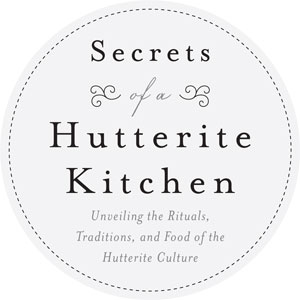

To my wonderful
I Am Hutterite readers
who wanted to know:
Could you go back?
AUTHORS NOTE
Hutterites are reluctant subjects. Throughout their bloody history and in every nation they have called home, they have been treated with suspicion, intolerance, and discrimination. More recently, certain North American media have exploited and misrepresented them to such an extent that individual communities have become even more guarded.
It took time and trust for me to be allowed to photograph and record the people in Secrets of a Hutterite Kitchen. At their request, names of the women and men and the colonies I visited were changed. Having made this concession, I was deeply touched by the way colony members embraced me and without reservation received me into their homes.
I am a member of the Schmiedeleut sect, which was the backdrop for my first book, I Am Hutterite. Secrets of a Hutterite Kitchen took me on a pilgrimage to my fathers people, the more orthodox Lehrerleut as well as the moderate Dariusleut sects. It is my dream that readers will begin to see Hutterites for who they are, a remarkable culture that has the same human weaknesses, fragilities, beauty, and strengths as the rest of the world.
PROLOGUE
I was born and raised on a Hutterite colony in western Canada. By all accounts, I had a very happy, and in some respects even privileged, childhood.
In 1969 my world was turned upside down when my parents gathered up my seven siblings and me and left the comfort and security of community for life in the mainstream. Overnight we were thrust into a society we did not understand and that did not understand us.
My Hutterite heritage hung over me like an invisible curtain of shame. Sweeping ignorance and prejudice about my culture made a smooth transition impossible.
Throughout my childhood, I had witnessed the suspicious and hostile stares from merchants and locals when we ventured into towns and cities. Clinging tightly to my mothers hand, I felt safe. She seemed so regal among her beehived, miniskirted peers. To my eyes, her flowing, pleated skirts and crisply starched polka-dotted Tiechel headscarf gave her an almost majestic air.
After we left the colony, I became desperate to fit in and be accepted. I disposed of everything that would identify me as Hutterite: my accent, my clothing, my hairstyle.
It took years to integrate and decades more to realize that my culture wasnt the problem.
In June 2007, I published my memoir, I Am Hutterite. The uniform rejection by the publishing world compelled me to self-publish. When my book was released, it was the first time in our 145-year history in North America that the Hutterite story was available to the mass market. It detailed my childhood at Fairholme Colony, the reason for my familys painful exodus, and the difficult aftermath of adapting to a new culture.
Like a prairie grass fire, I Am Hutterite became a national best seller, winning acclaim and awards on both sides of the border.
I was deeply touched by the way ordinary people responded to my story, never more than when I was told about a critically ill woman in Calgary whose dying wish was to read my book and who died clasping it to her bosom.
Hundreds of letters, emails, and gifts poured in from across the country. A Yukon woman sent me a jar of cloudberry jam that she had made as she stirred and thumbed through the pages of my book, unable to put it down. A construction worker from Quebec thanked me with a bottle of vodka. A young man bussed across Winnipeg to attend a book signing and presented me with a Mackintosh Toffee bar after reading that it was a special childhood treat.
Just as eager to read the book were Hutterites themselves. They had never had their lives so intimately chronicled. Some were bitter that I had exposed the dark side of community life, while others embraced the honest way in which I portrayed them.
Mainstream readers of I Am Hutterite longed for the sense of community I was blessed with at Fairholme. They were intensely curious about what my life would have been like if my parents hadnt left the colony.
In Secrets of a Hutterite Kitchen, I have returned to the language, the food, and the people of my childhood, to the unmistakeable candor, unbridled curiosity, and self-effacing humor of my clan.
Although I havent lived on a Hutterite colony for over forty years, my journey back has been a journey forward. And what I have discovered is that neither time nor distance can erase the ties that bind us to our cultural heritage.

Introduction
Work brings satisfaction to life but a measure of laziness strengthens the body.
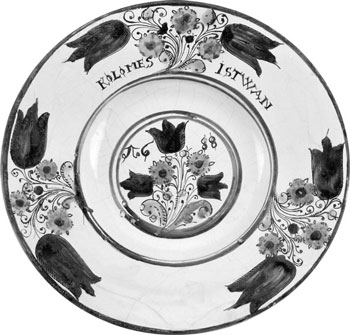
This beautiful Haban faience ceramic plate was handcrafted by Hutterites in the sixteenth century. It was discovered in a European castle and is on display in the Hungarian National Museum.
IT WAS A GORGEOUS early-October day in 1989, and I was vacationing in Innsbruck, Austria. Honey-colored light streamed through the bay window of my hotel room as I relished the pleasure of breakfast in bedorange juice, coffee, and large, crusty rolls with an assortment of jams and cheeses. I pinched a familiar-looking, pale mound, closed my eyes, and popped it in my mouth.
Next page

